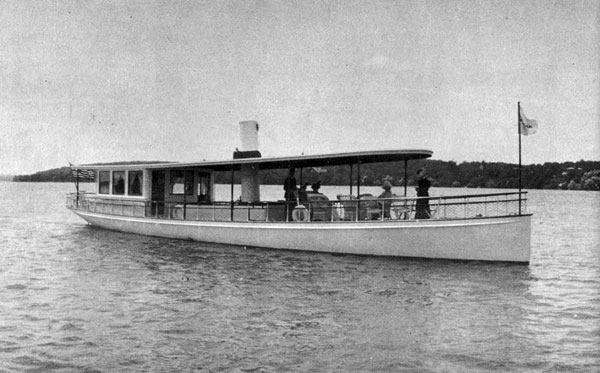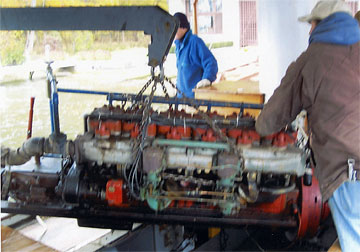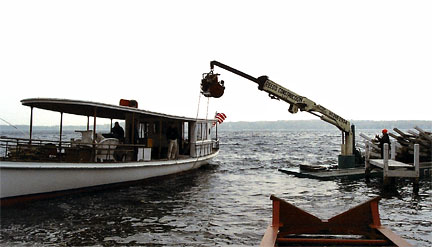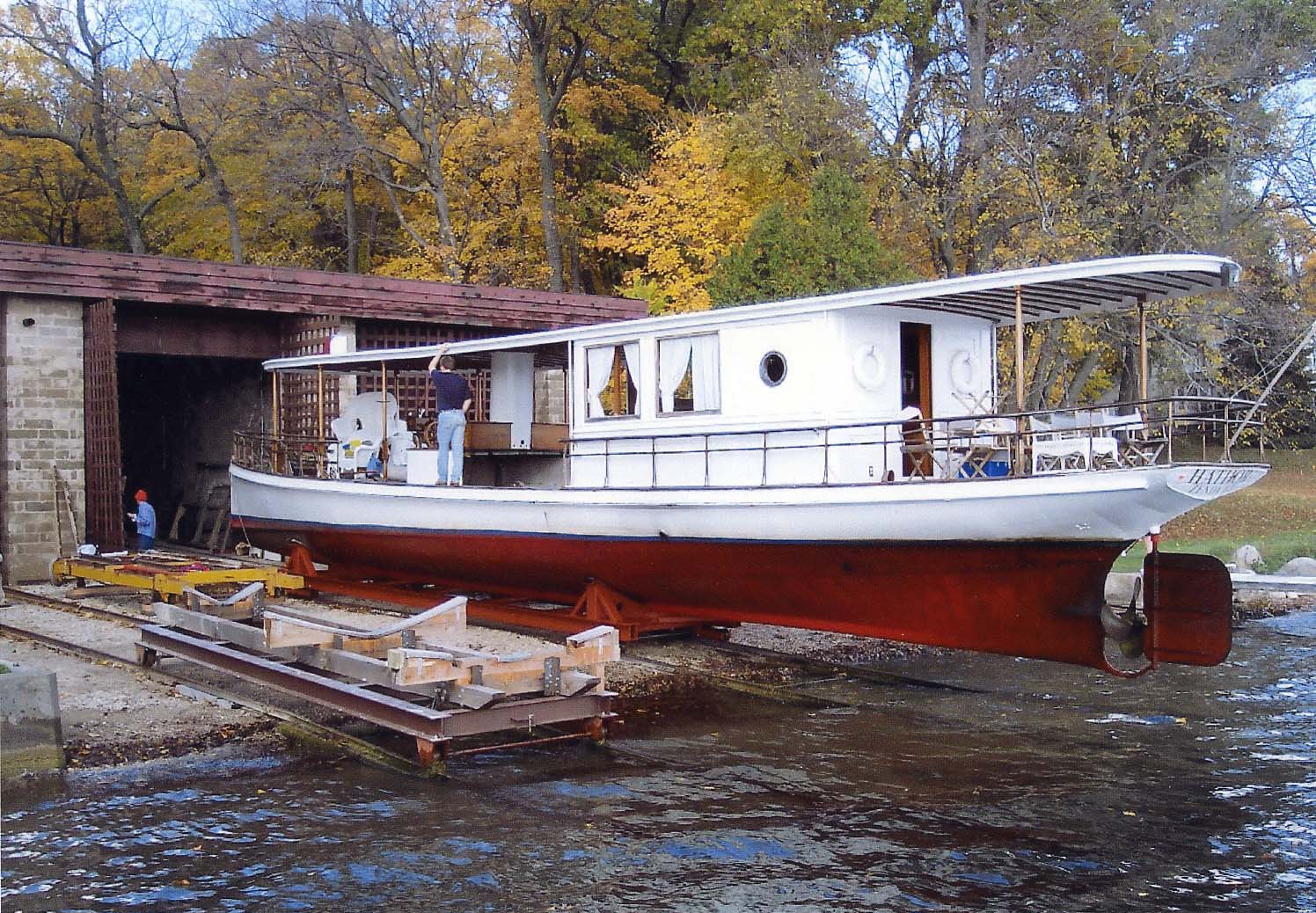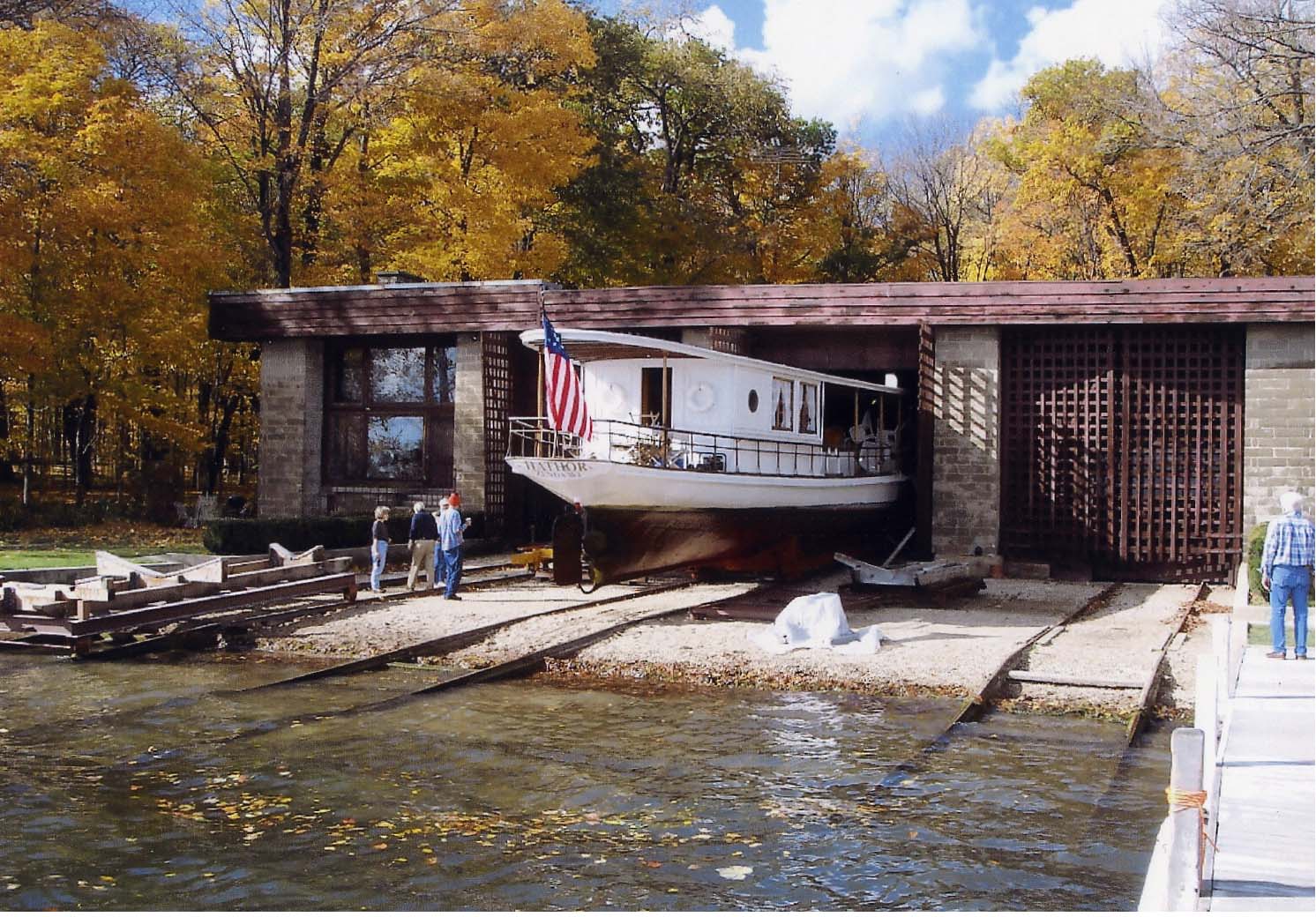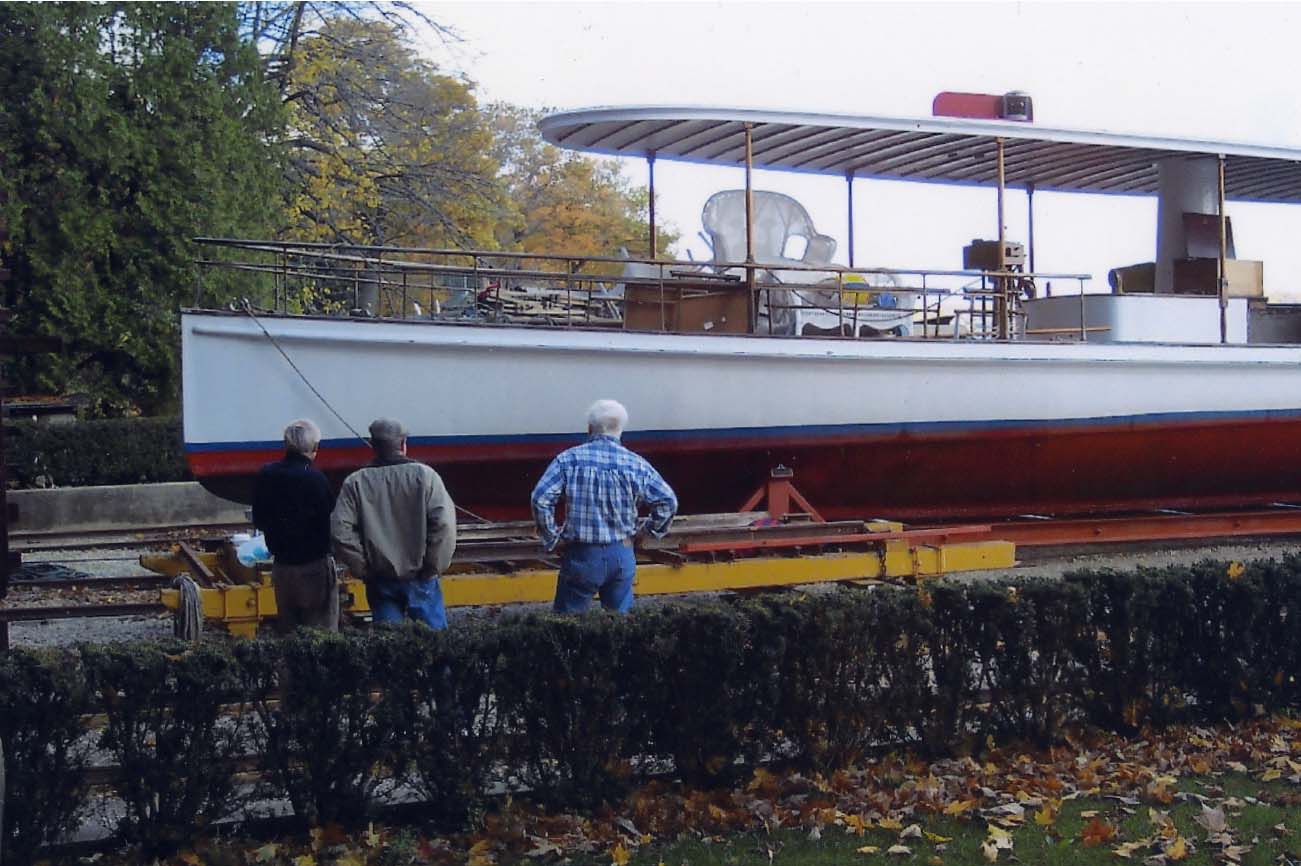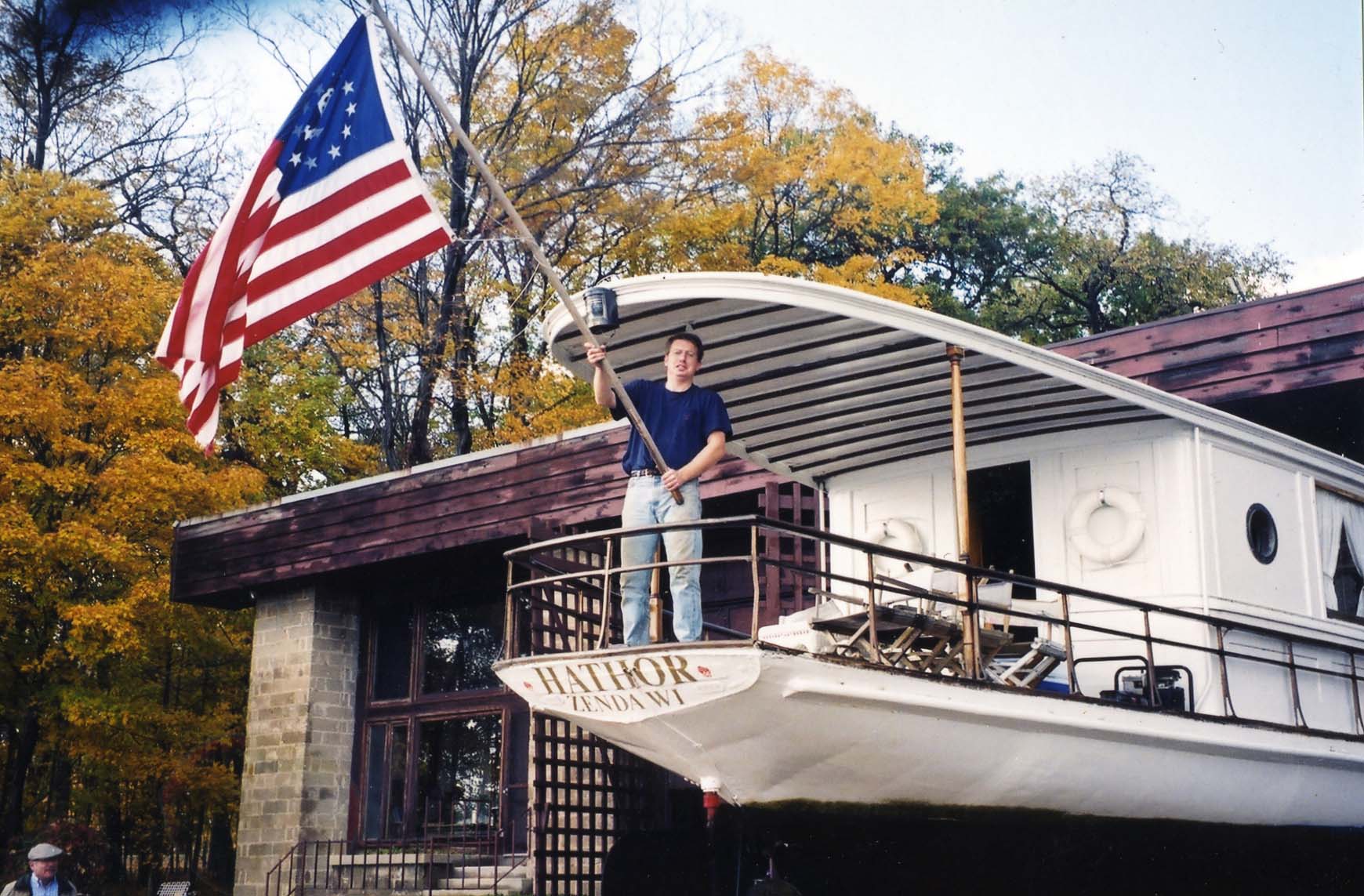|
The Story of Hathor (Continued) CHAPTER 2, THE RESTORATION PROCESS In July, 2004, for a number of reasons, Bill Sills decided to leave the area and asked me if I would take care of HATHOR. I talked with my brother, Walter, and asked him if I could put HATHOR in one of his boathouses. He was willing to do that and became interested in the restoration project because of his earlier association with the boat. Bill Sills subsequently sold his boat house, where he had been living in one side and kept the boat in the other side, and departed for Idaho. He left the boat tied to my pier on an overcast mid-October weekend. I walked down to look at the boat, mindful of the old adage not to accept gifts that eat. Here was a gift that had a voracious appetite. Wow! What have I gotten into? The first thing I would say is that restoration is not for the faint of heart. In my experience, an old boat will have problems that are not within the realm of human imagination, surprises that can only be discovered and properly remedied when every part is exposed to the light of day. And the only way to approach it is to take the boat completely apart. It is also expensive and time consuming. Time and money go in opposite directions. If you have more of one you can get by with less of the other.
When the day came to haul the boat out of the water, it was late October and there was a chill in the air. I woke up before dawn with the adrenalin rush I'm sure all sailors experience when they are called to battle stations. The day started ominously with a heavy fog. I went down to the pier just as the sun was coming up optimistically expecting to start the engine. What a struggle. Starting fluid, extra batteries, long cranking, increasing smell of gasoline, finally it coughed, spit back at me, and rumbled to semblance of life on about three of the six cylinders. But amazingly, that was enough to drive the boat. My wife, Sue had been patiently waiting on the dock to see me off with increasing apprehension. At one point I recall her saying, "Can't we get someone who knows something?"
I had also arranged for John Reed of the Reed Pier Company to be there to remove the engine from HATHOR. I thought it would be difficult to take the engine out of the boat while the boat was in the boathouse, so I asked him to bring their crane barge that they used for pier work to lift it out. I quickly severed the electrical, water, fuel, exhaust lines, and unbolted the engine mounts and propeller shaft coupling. I think it took me less than half an hour to do that. In the meantime, the wind was picking up out of the south and we had large two-foot waves beginning to wash in.
The engine was quite heavy, about 3,000 pounds, and it was almost more than the pier barge could lift, the front end of the barge going under water at one point and resting on the bottom of the lake. We did get the engine out with a lot of pushing and prying, and the crane set it on the beach.
With the engine out, we used a small motor boat to pull HATHOR out into the lake and attached long ropes to the various piers to pull and guide the boat into position over the submerged cradle. It was especially difficult because of the increasing wind and waves and we were unsure of just how the new cradle would work out. The tow truck we planned to use to pull the boat out had arrived and connected its cable to the cradle and began to pull the boat out of the water. When the boat was about half way out, it unexpectedly slid back in the cradle about three feet. What I learned from this, and this was one of Mr. Sills' problems, was that the boat has some rocker (curve) to its keel which made it easy to slide in its cradle, and the boat needed to be securely held in place. In the future we need to use straps to hold the boat in its proper location on the cradle and prevent it from sliding backward when we launch or haul out.
|
